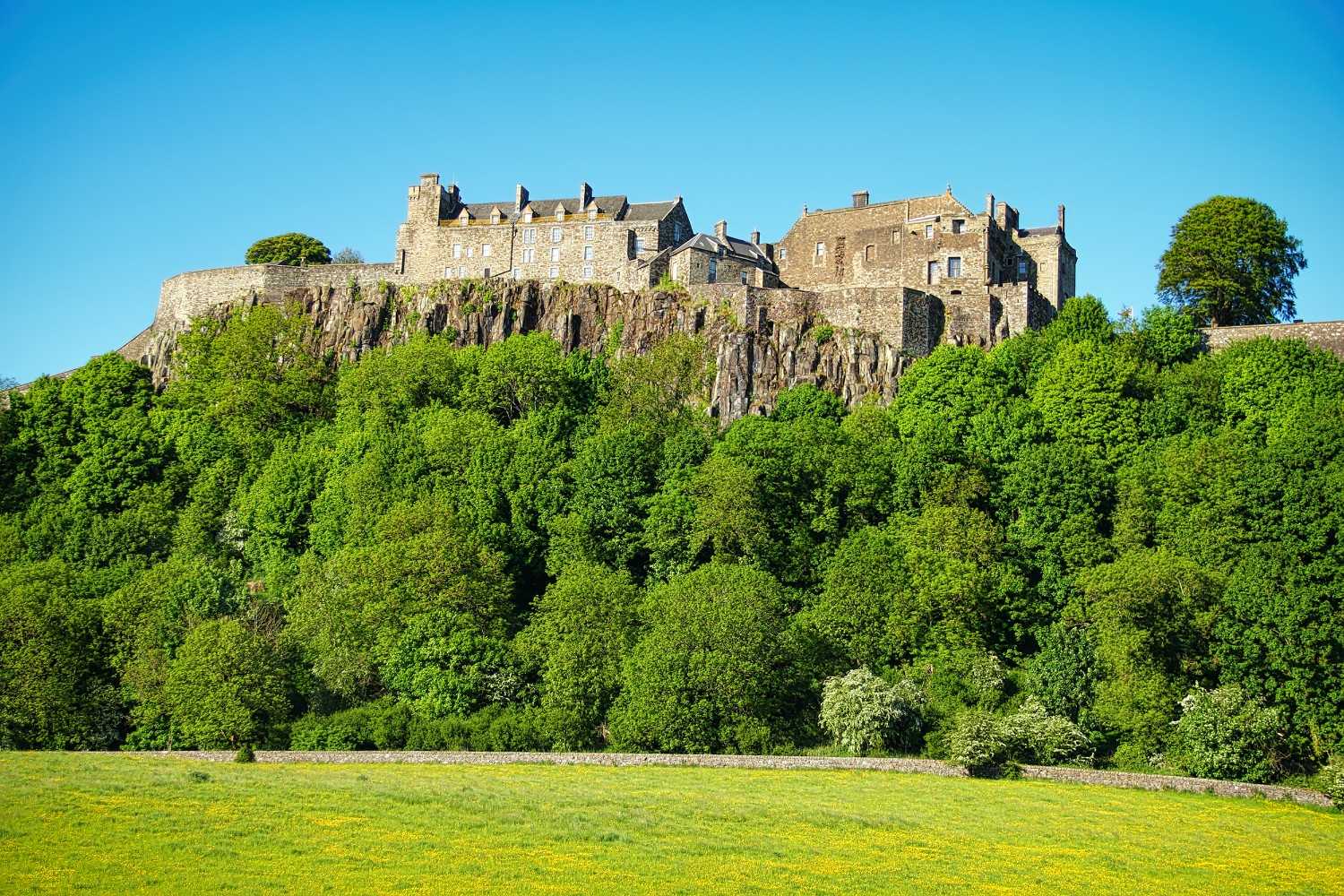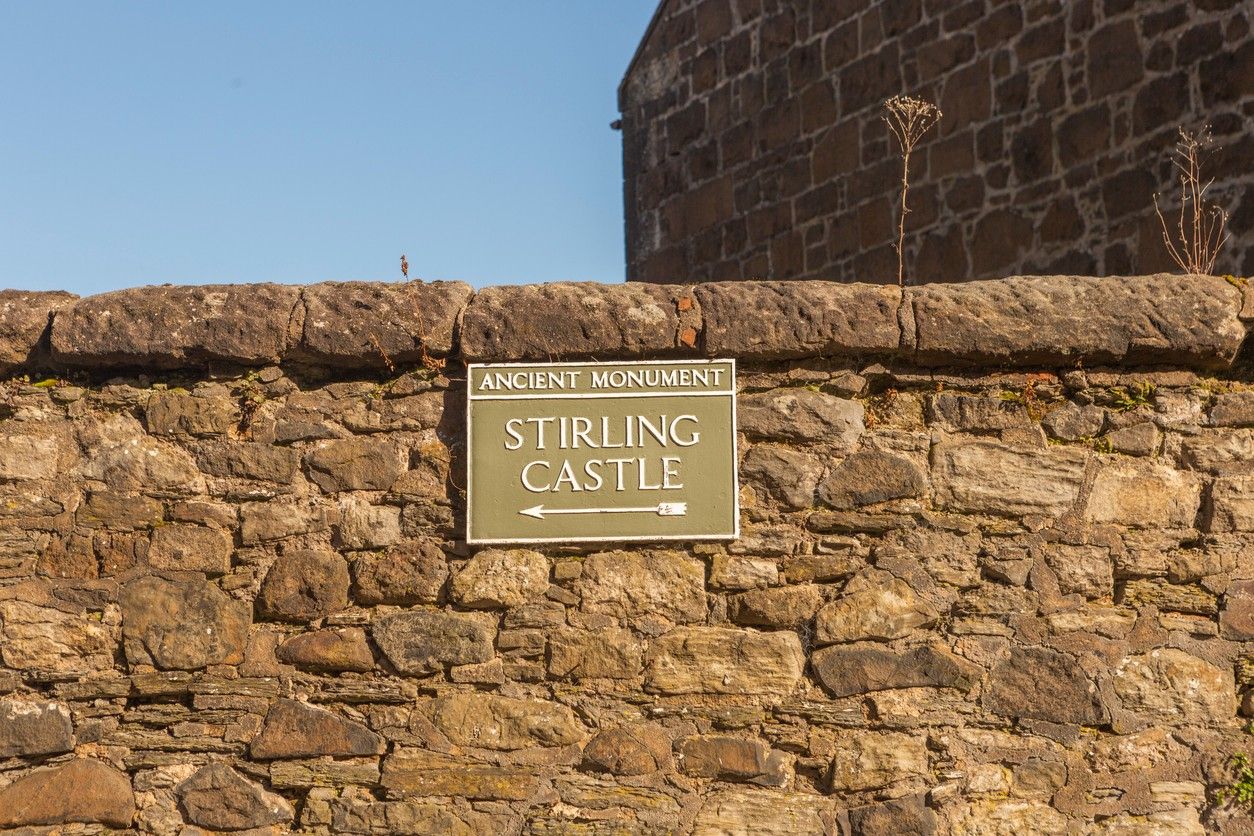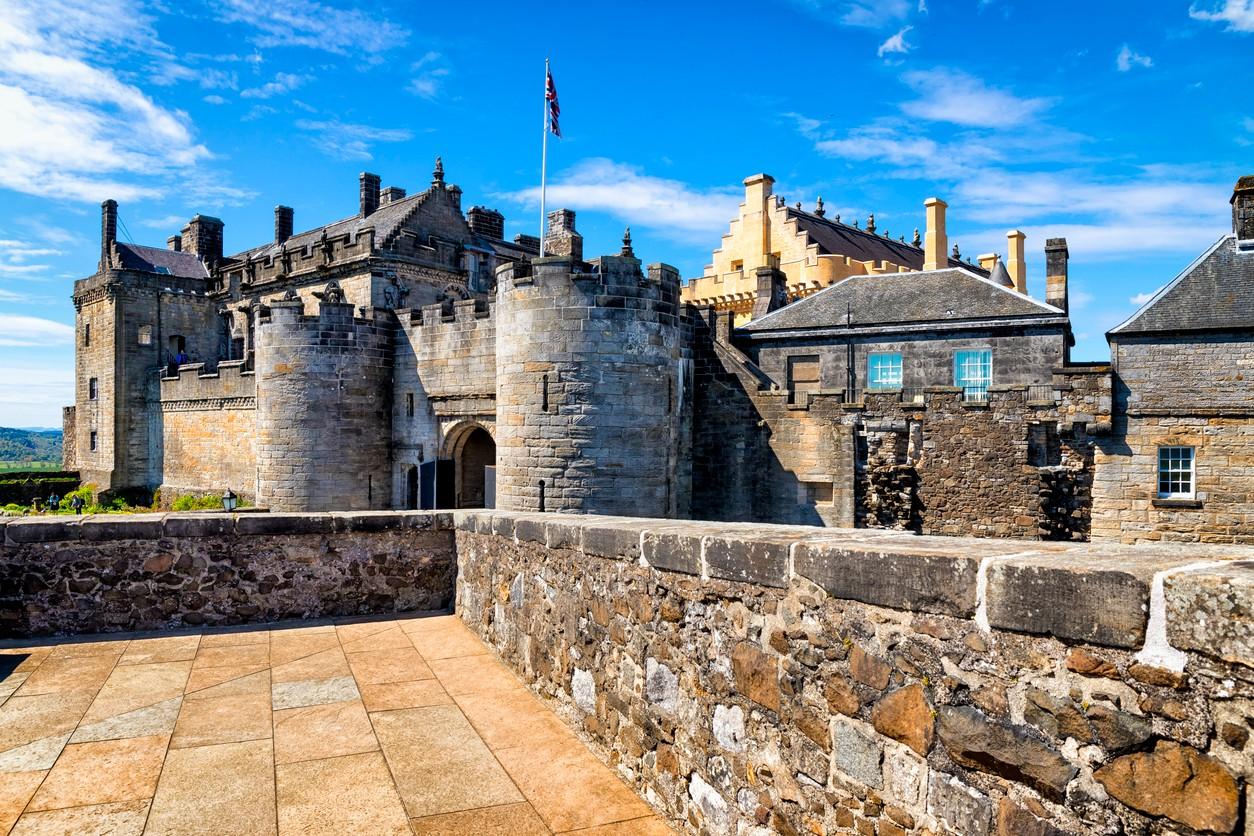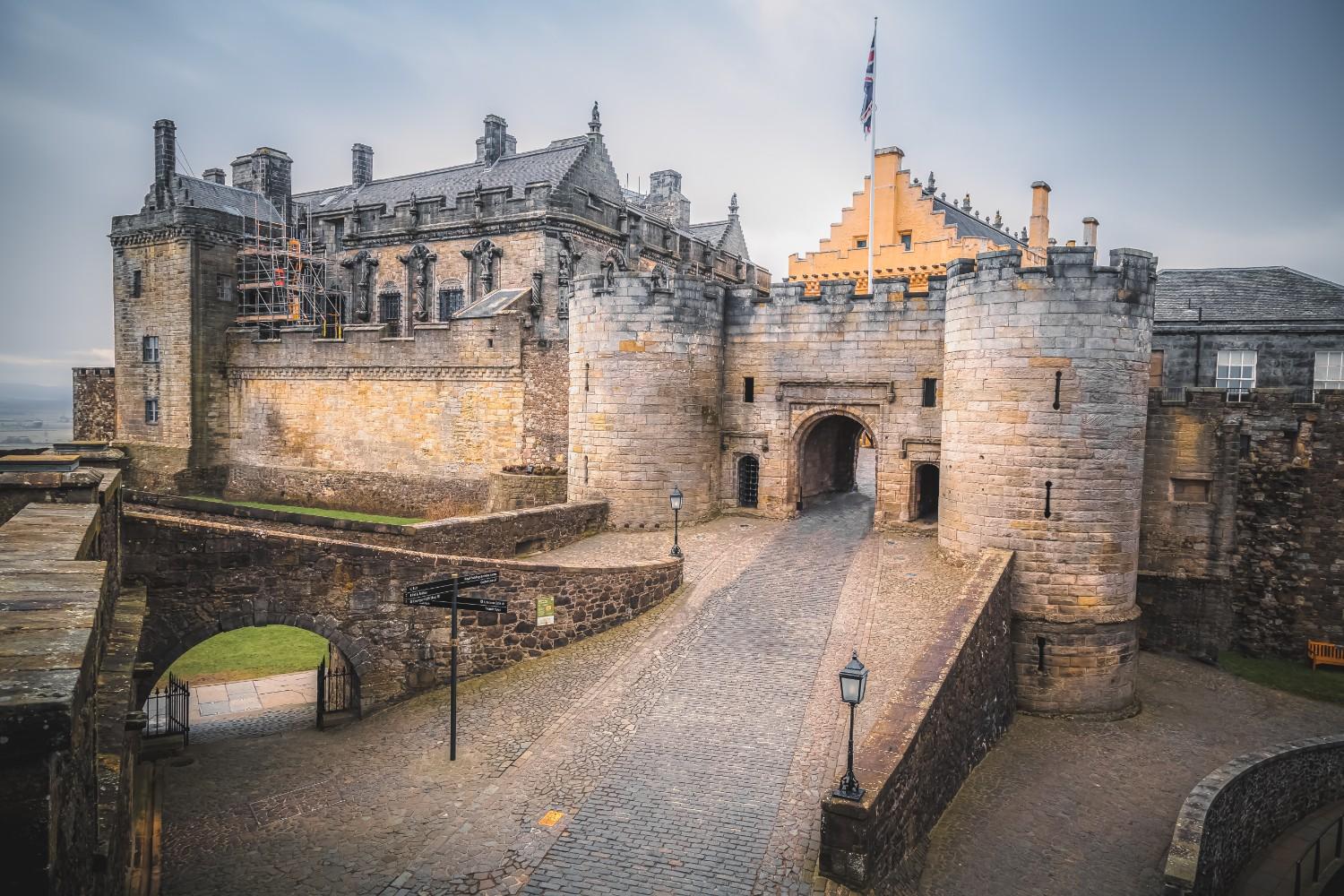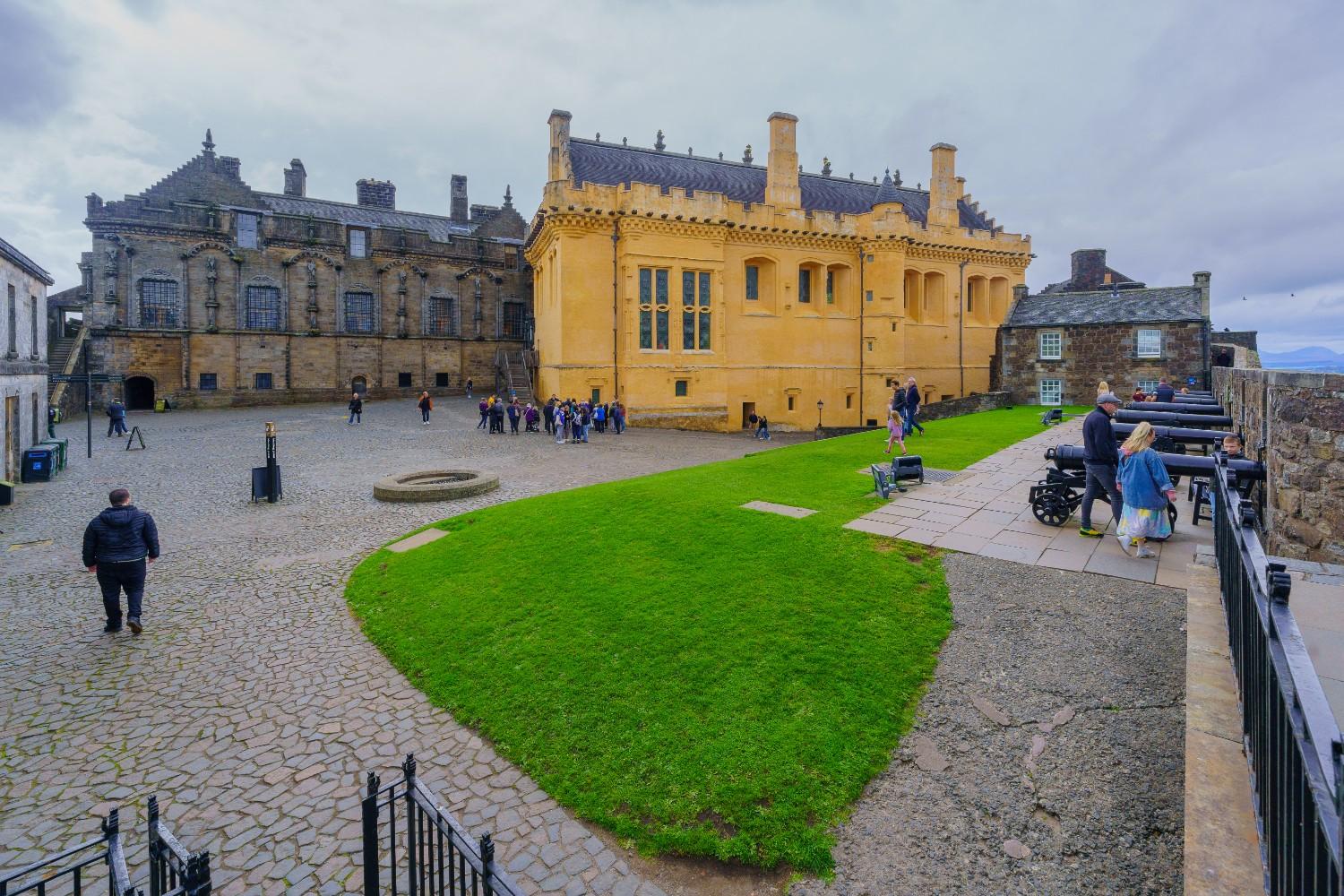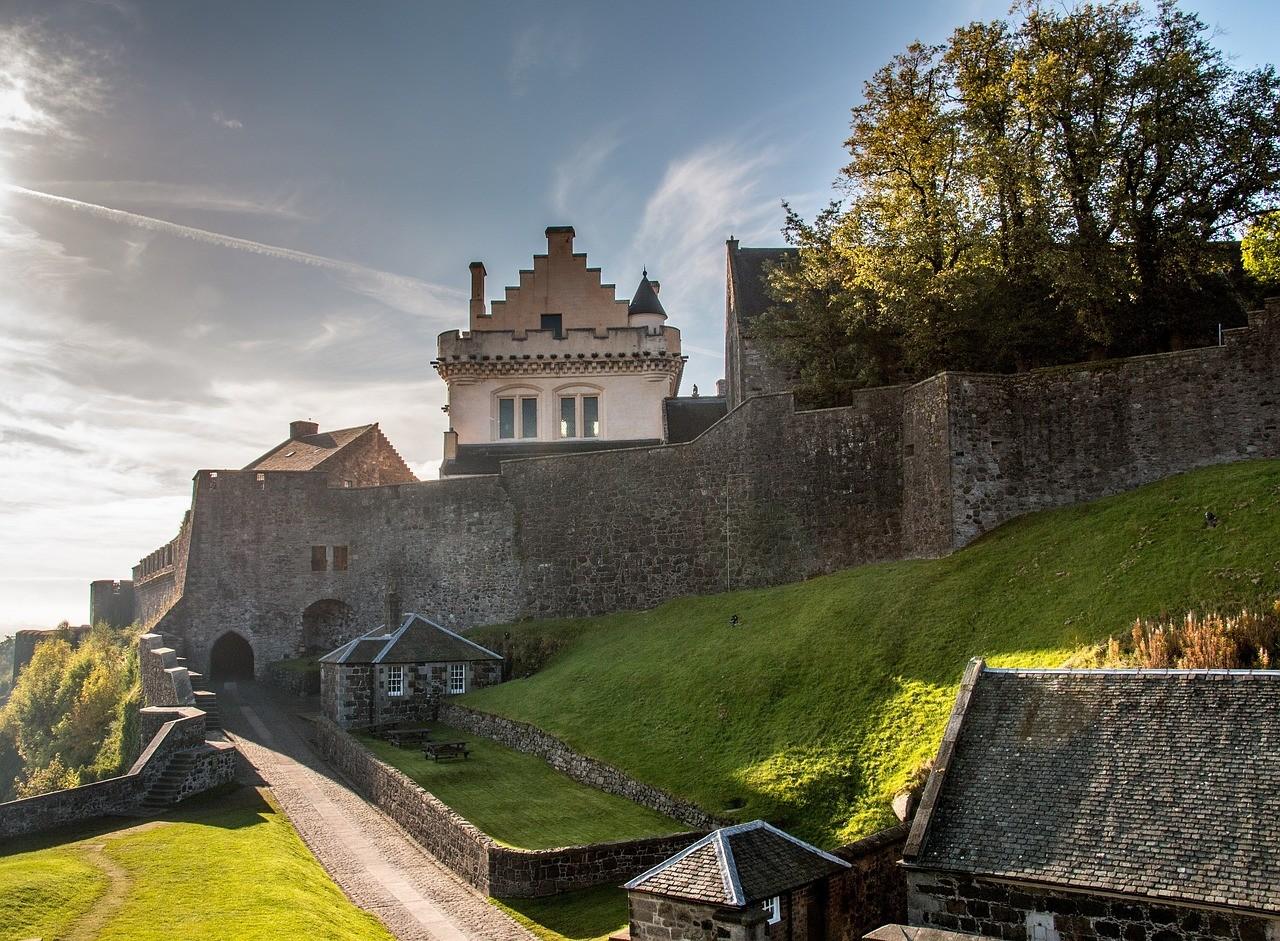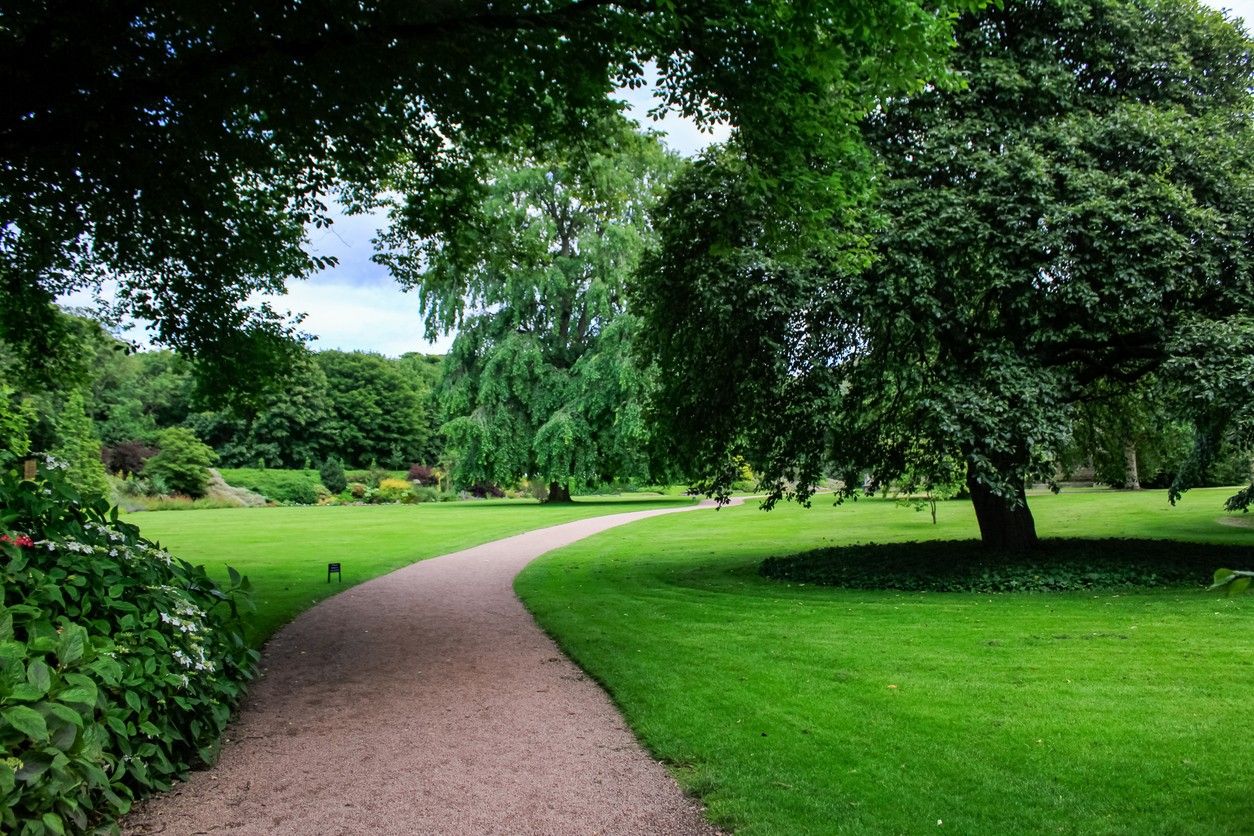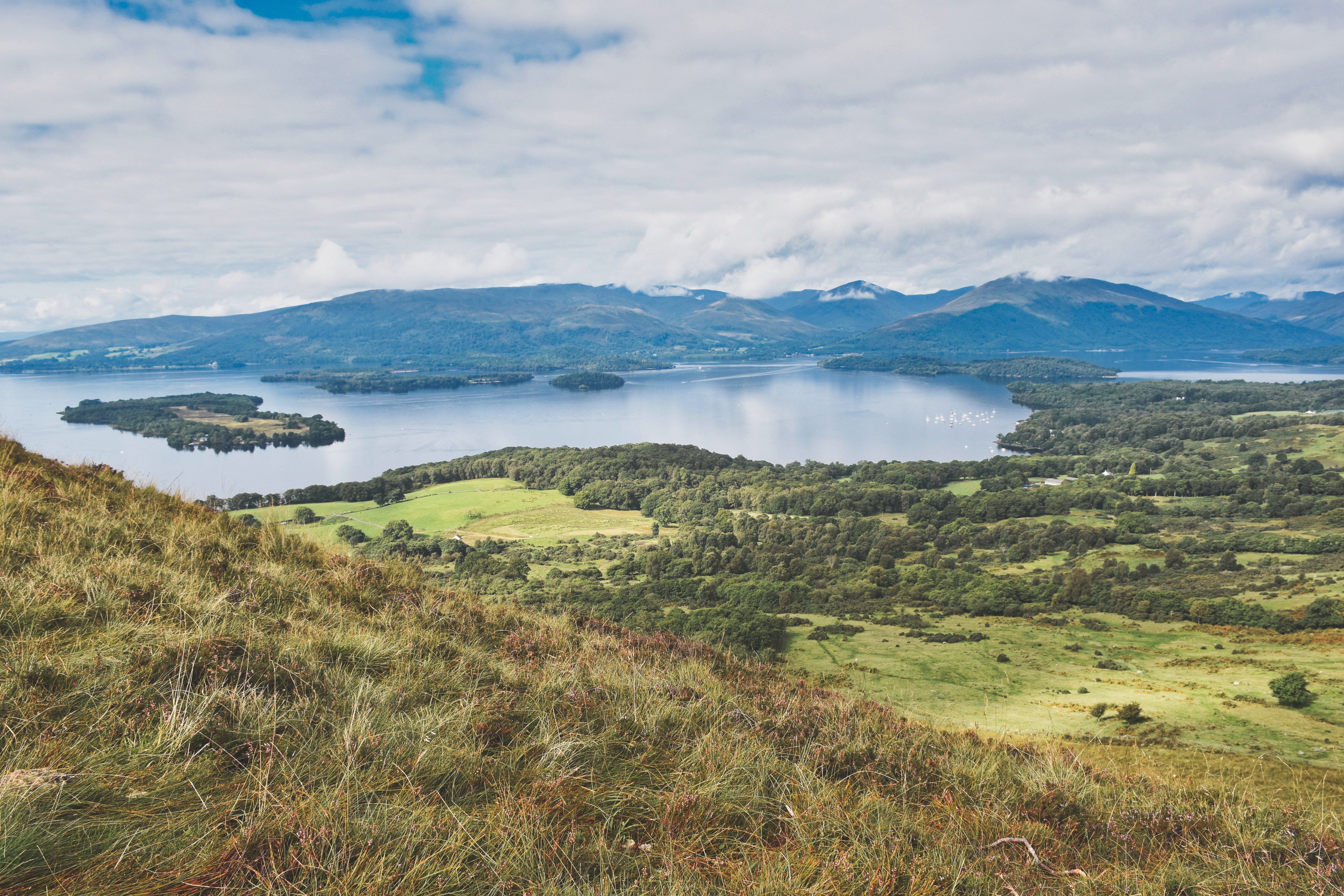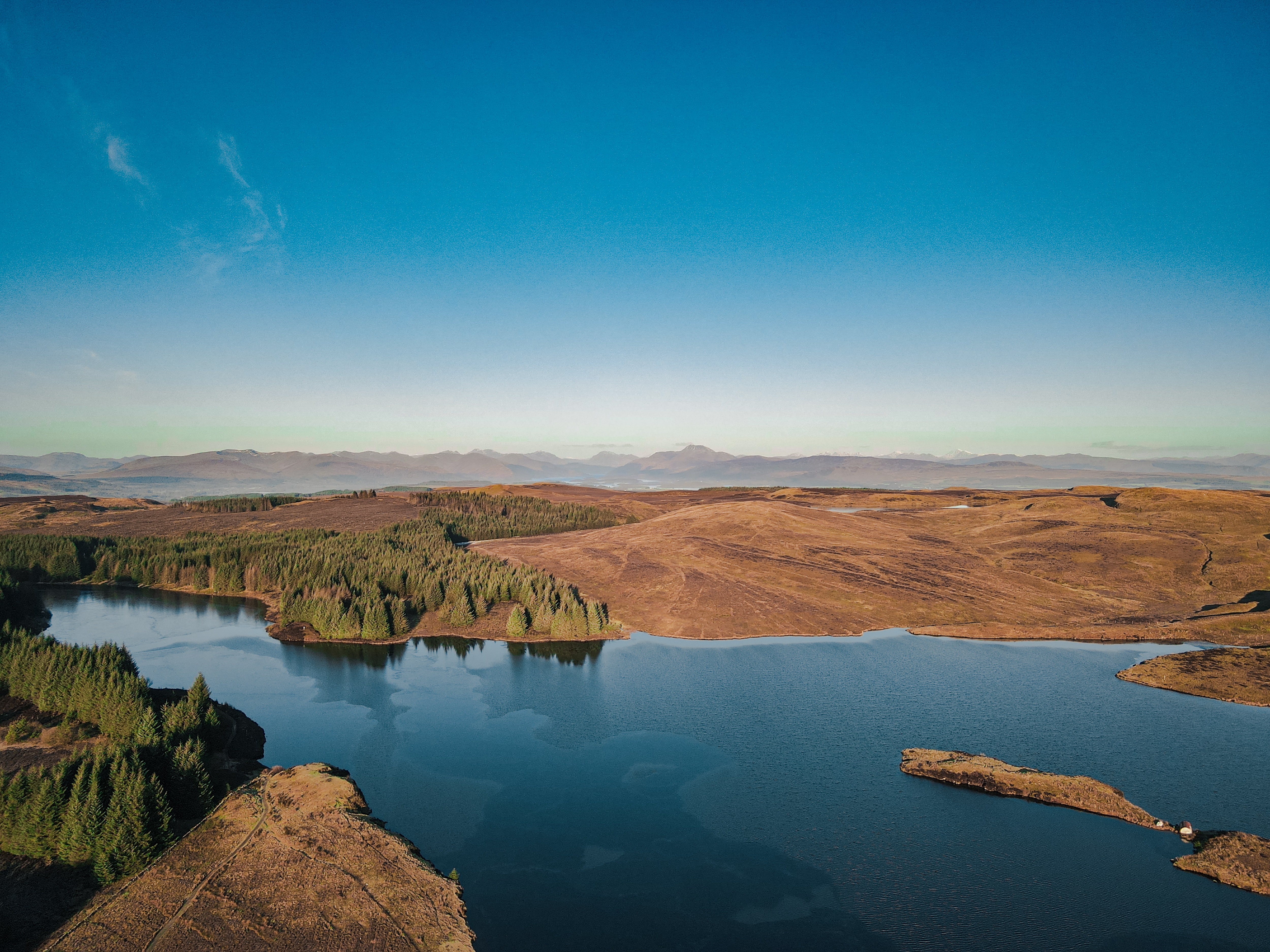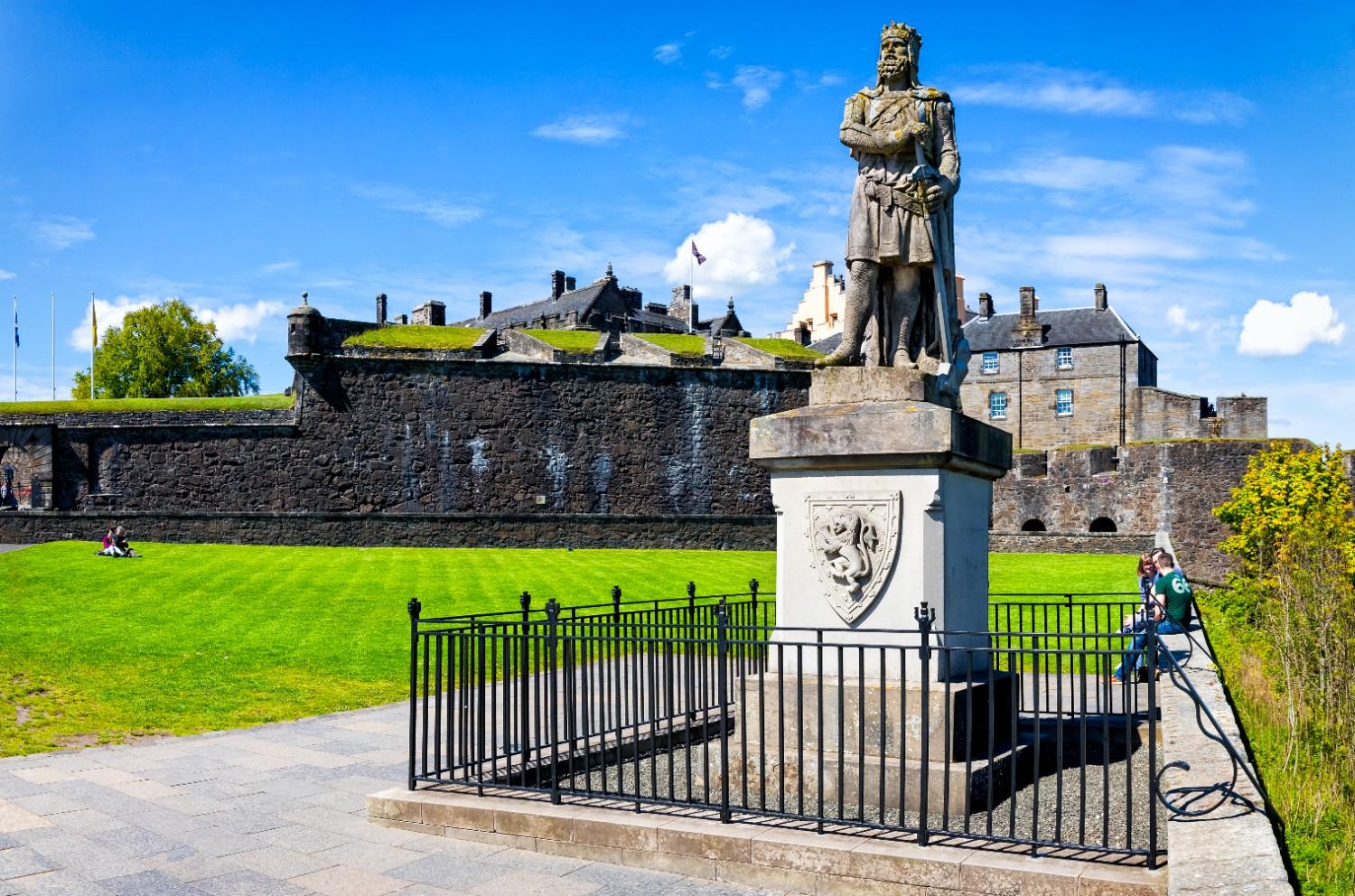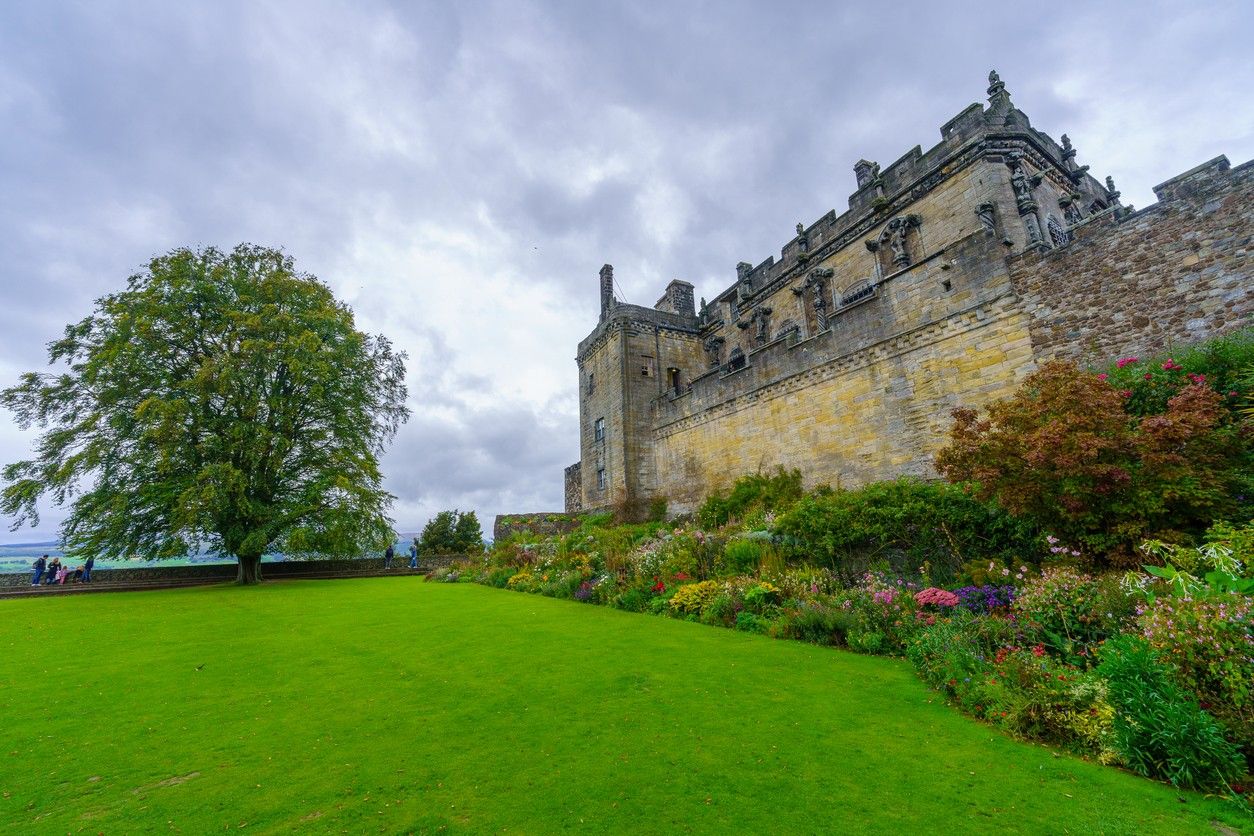Perched atop a commanding volcanic rock, Stirling Castle stands as a testament to the rich history and enduring spirit of Scotland. This magnificent fortress has witnessed the ebb and flow of the nation's tumultuous past, serving as a royal residence, a military stronghold, and a symbol of Scottish identity. For centuries, the castle has captivated the imaginations of visitors from around the world, offering a glimpse into the grandeur and resilience of the Scottish people. Within the castle's well-preserved walls, you'll uncover a wealth of fascinating stories and insights. From the pivotal Battle of Stirling Bridge, where William Wallace and his forces dealt a decisive blow to the English invaders, to the coronation of Mary, Queen of Scots, the castle has played a pivotal role in shaping Scotland's history. Explore the lavish royal apartments, marvel at the architectural masterpieces, and immerse yourself in the castle's captivating past through a range of engaging special events and re-enactments.
The History of Stirling Castle
Perched atop a volcanic rock, Stirling Castle has long been a strategic stronghold, dating back to the 12th century. The castle has witnessed numerous pivotal moments in Scottish history, from the Wars of Scottish Independence to the coronation of Mary, Queen of Scots. Throughout the centuries, it has served as a royal residence, a military fortification, and a symbol of Scottish pride and resilience.
The Battle of Stirling Bridge
One of the most significant events in the castle's history was the Battle of Stirling Bridge in 1297, where William Wallace and his forces famously defeated the English army, marking a crucial turning point in the struggle for Scottish independence. The battle was a strategic masterpiece, with Wallace's troops expertly exploiting the narrow confines of the Stirling Bridge to inflict a devastating defeat on the invading English forces. The battle unfolded on September 11, 1297, when the English, led by the Earl of Surrey, attempted to cross the Stirling Bridge to reach the Scottish forces on the other side. Wallace, recognising the tactical advantage of the bridge's narrow crossing, positioned his troops on the high ground, raining down arrows and other projectiles on the vulnerable English soldiers as they made their way across the bridge.
The limited width of the bridge meant that the English could not deploy their full strength, and they became trapped and overwhelmed by the ferocity of the Scottish attack. As the battle raged, the bridge itself collapsed, sending scores of English soldiers plunging into the River Forth below. The victory was a resounding one for the Scots, and it cemented Wallace's reputation as a brilliant military tactician and a symbol of Scottish resistance against the English occupation. The Battle of Stirling Bridge was a pivotal moment in the Wars of Scottish Independence, inspiring the Scots to continue their fight for freedom and self-governance. The castle's role in this historic event has made it a revered landmark in the nation's collective consciousness, a testament to the enduring spirit and resilience of the Scottish people.
Royal Residences and Coronations
Visitors to Stirling Castle can explore the well-preserved interiors of the royal apartments, marvelling at the intricate Renaissance architecture and the stunning tapestries that adorn the walls. The castle's importance as a royal residence is well-documented, with several Scottish monarchs choosing it as their preferred home over the centuries. One of the most significant figures associated with Stirling Castle is James IV, who undertook extensive renovations and expansions to transform the castle into a true palace fit for the Scottish crown. During his reign, the castle's interiors were adorned with lavish furnishings, ornate carvings, and exquisite tapestries, reflecting the grandeur and opulence of Scotland's royal court.
The Great Hall, constructed in the late 15th century, was a particular focal point of James IV's efforts to elevate the castle's status. This magnificent banqueting hall was the setting for numerous royal celebrations and diplomatic events, showcasing the castle's role as a centre of power and influence. The hall's impressive size, intricate architectural details, and stunning carved wooden ceiling have made it a beloved feature of Stirling Castle for visitors to explore and admire. Another significant event that took place within the walls of Stirling Castle was the coronation of Mary, Queen of Scots, in 1543. As the infant monarch was crowned at just nine months old, the ceremony was poignant and historic, cementing the castle's role as a stage for the country's most important political and religious ceremonies.
The Architecture and Design of Stirling Castle
Stirling Castle is renowned for its exceptional architectural design, which reflects the evolution of Scottish royal residences over the centuries. The castle's earliest structures date back to the 12th century, with the majority of the current buildings constructed during the 15th and 16th centuries, under the reigns of James IV and James V.
The Royal Palace
One of the castle's most impressive architectural features is the Renaissance-style Royal Palace, built in the 1530s during the reign of James V. This stunning structure represents a significant departure from the castle's earlier military architecture, reflecting the growing importance of Stirling as a seat of royal power and cultural refinement. The Royal Palace was conceived as a true palace fit for a king, with intricate carvings, ornate fireplaces, and beautifully decorated rooms that offered a glimpse into the opulent lifestyles of Scotland's monarchs. The building's design was influenced by the emerging Renaissance style, which was gaining popularity across Europe at the time, and it showcased the Scottish monarchy's efforts to align itself with the cultural and artistic movements of the continent. Visitors to the Royal Palace can explore the well-preserved interiors, including the King's Inner Hall, the Queen's Inner Hall, and the Royal Apartments. These spaces were designed to impress and delight, with ornate plasterwork, intricate wood carvings, and lavish furnishings that reflected the castle's status as a centre of power and wealth. The attention to detail and the sheer scale of the Royal Palace's construction testify to the significance that the Scottish monarchy placed on Stirling Castle as a royal residence. By transforming the castle into a true Renaissance palace, James V and his successors sought to cement the castle's position as a symbol of Scottish power and cultural sophistication, rivalling the grandeur of other royal residences across Europe.
The Great Hall
The Great Hall, a magnificent banqueting hall, is another architectural highlight of Stirling Castle. Constructed in the late 15th century, this grand space was the setting for numerous royal celebrations and diplomatic events, showcasing the castle's role as a centre of power and influence. The Great Hall's impressive dimensions, measuring 17 meters in height and 42 meters in length, were designed to awe and impress visitors. The hall's soaring ceilings, ornate stone fireplaces, and intricate carved wooden beams created an atmosphere of grandeur and opulence that was befitting of the Scottish monarchy's most important events.
Throughout its history, the Great Hall played a vital role in the social and political life of the castle. It hosted lavish royal banquets, where the Scottish nobility and visiting dignitaries would gather to celebrate and negotiate. The hall also served as a venue for important meetings, conferences, and other state functions, underscoring its significance as a hub of power and influence. The Great Hall's architectural design was a reflection of the evolving tastes and priorities of the Scottish monarchy. The building's transition from a purely functional space to a more ornate and decorative hall mirrored the growing importance of Stirling Castle as a centre of cultural and artistic expression, rather than just a military fortification. Today, the Great Hall stands as a testament to the castle's rich history and the enduring legacy of the Scottish monarchy. Visitors can explore the hall's well-preserved interiors, marvelling at the intricate craftsmanship and the sense of grandeur that permeates the space, transporting them back in time to the days when it hosted the most important events in the kingdom.
Defensive Features
The castle's defensive features, such as the Forework and the Nether Bailey, reflect its strategic importance as a fortification. These well-preserved structures offer visitors a glimpse into the engineering feats that allowed Stirling Castle to withstand numerous sieges and attacks throughout its history. The Forework, constructed in the 16th century, was a critical part of the castle's defences. This impressive structure, with its thick stone walls and imposing towers, was designed to protect the castle's main entrance from attack. Visitors can explore the Forework's various levels, including the guardrooms, the gunrooms, and the battlements, gaining a deeper understanding of the castle's military might and the ingenious strategies employed by its defenders.
The Nether Bailey, situated on the lower slopes of the castle hill, was another crucial component of the castle's defensive system. This outer bailey, with its walls, towers, and gatehouses, served as an additional layer of protection, allowing the garrison to monitor and repel any approaching threats. Exploring the Nether Bailey provides visitors with a tangible sense of the castle's strategic location and the challenges faced by its defenders over the centuries. Beyond the Forework and the Nether Bailey, Stirling Castle boasted a range of other defensive features, including towers, curtain walls, and a moat, all of which worked in concert to make the castle a formidable fortress. The castle's ability to withstand numerous sieges and attacks, even in the face of advancing military technology, is a testament to the ingenuity and skill of its builders and the resilience of the Scottish people who fought to defend it.
Architectural Diversity
The architectural diversity of Stirling Castle is a testament to the evolving tastes and priorities of Scotland's ruling class. From the Romanesque-style chapel to the Neo-Gothic additions of the 19th century, the castle's design seamlessly blends the old and the new, creating a captivating and visually stunning experience for all who visit. The castle's earliest structures, such as the Chapel Royal, were built in the Romanesque style, reflecting the architectural trends of the 12th century. This ornate, stone-built chapel, with its rounded arches and intricate carvings, offers a glimpse into the religious and cultural life of the medieval Scottish court. As the castle's role evolved over the centuries, its architectural style adapted to reflect the changing needs and tastes of the Scottish monarchy. The construction of the Renaissance-style Royal Palace in the 16th century, for example, marked a significant shift in the castle's design, incorporating the latest stylistic influences from continental Europe.
The 19th century saw the addition of several Neo-Gothic elements to the castle, as the romantic movement's fascination with the medieval past inspired a wave of restorations and renovations. Features such as the clock tower and the ornate stonework on the castle's exterior were added during this period, blending seamlessly with the older structures and creating a harmonious and visually striking ensemble. This architectural diversity is a testament to the enduring significance of Stirling Castle as a symbol of Scottish identity and power. Each era has left its mark on the castle, resulting in a rich tapestry of styles that captivates and delights visitors. As they explore the castle's various buildings and structures, visitors can gain a deeper appreciation for the evolving tastes and priorities of the Scottish monarchy, and how the castle's design has been shaped by the nation's tumultuous history.
Special Events and Re-enactments
The Stirling Castle news often highlights special events and re-enactments that allow visitors to step back in time and witness the castle's history come to life. These events offer a unique opportunity to connect with the castle's past and gain a deeper understanding of the pivotal role it has played in Scotland's history.
Medieval Banquets
One of the most popular special events at Stirling Castle is the medieval banquet. Hosted in the castle's magnificent Great Hall, these immersive dining experiences transport visitors back to the days of Scottish royalty. Guests are greeted by costumed characters, who guide them through the evening's festivities, which include a sumptuous feast of traditional Scottish dishes, lively music, and captivating performances. The medieval banquets at Stirling Castle are designed to recreate the grandeur and opulence of the castle's heyday when the Scottish monarchy would have hosted lavish celebrations and diplomatic events within these very walls. Visitors are encouraged to don period-inspired attire and fully embrace the medieval atmosphere, creating a truly memorable and authentic experience.
The evening's entertainment is just as captivating as the setting. Skilled performers, dressed in the colourful and elaborate costumes of the era, regale the guests with lively music, traditional dances, and interactive storytelling. These performances offer a glimpse into the cultural life of the Scottish court, allowing visitors to immerse themselves in the sights, sounds, and traditions of the past. The menu for the medieval banquet is a true celebration of Scottish culinary heritage. Guests are served a multi-course feast featuring hearty dishes such as roasted meats, savoury pies, and seasonal vegetables, all prepared using authentic medieval recipes and techniques. The rich flavours and presentation of the food transport diners back in time, creating a truly holistic experience that engages all of the senses.
Throughout the evening, the castle's staff, also in period costume, interact with the guests, providing historical context and adding to the immersive atmosphere. Visitors are encouraged to engage with the characters, asking questions and gaining a deeper understanding of the castle's history and the lives of its inhabitants. The medieval banquets at Stirling Castle are not just a dining experience – they are a captivating journey through the annals of Scottish history. By combining the grandeur of the castle's architecture, the delights of traditional Scottish cuisine, and the magic of live entertainment, these events offer a unique and unforgettable way for visitors to connect with the past and truly appreciate the significance of this iconic Scottish landmark.
Guided Tours and Re-enactments
In addition to the medieval banquets, Stirling Castle also hosts a variety of guided tours and historical re-enactments throughout the year. These immersive experiences allow visitors to delve deeper into the castle's past, with knowledgeable guides sharing captivating stories and insights that bring the castle's history to life. One popular guided tour, for example, focuses on the Battle of Stirling Bridge, offering visitors a chance to walk in the footsteps of William Wallace and his forces as they prepare for the pivotal clash with the English army. Costumed interpreters bring the battle to life, reenacting key moments and providing a visceral understanding of the events that unfolded on that fateful day. As the tour begins, visitors are transported back to the year 1297, when the Scottish resistance was at a critical juncture. The guide sets the scene, describing the strategic importance of Stirling Castle and the surrounding landscape, and the growing tensions between the Scots and the occupying English forces. Visitors are then led through the castle's outer bailey, where they can visualise the preparations made by Wallace and his men as they positioned themselves for the impending battle.
At the Stirling Bridge, the tour takes a dramatic turn, as the costumed interpreters begin to reenact the pivotal moments of the conflict. Visitors witness the clash of swords, the thunder of hooves, and the shouts of the combatants, immersing themselves in the chaos and the heroism of the famous battle. The guides provide vivid accounts of the tactics employed by the Scottish forces, highlighting the strategic brilliance of Wallace and his commanders in exploiting the narrow confines of the bridge to devastating effect. Throughout the tour, the guides encourage visitors to engage with the reenactments, inviting them to ask questions, handle replica weapons, and even try on period-appropriate armour. This interactive approach allows visitors to gain a deeper understanding of the challenges faced by the Scottish defenders and the bravery and determination that ultimately led to their triumph. Beyond the Battle of Stirling Bridge, the castle's guided tours cover a wide range of topics, from the architectural evolution of Stirling Castle to the lives of its royal inhabitants. These experiences offer a level of depth and detail that can be difficult to achieve through self-guided exploration, providing visitors with a rich and comprehensive understanding of the castle's enduring significance.
Exploring the Surrounding Area
While Stirling Castle is undoubtedly the main draw, the surrounding area offers a wealth of additional attractions and activities for visitors to enjoy.
Historic Town of Stirling
While Stirling Castle is undoubtedly the main draw, the historic town of Stirling offers a wealth of additional attractions and activities for visitors to explore. As the castle's close neighbour, the town has a rich history of its own, serving as a strategic and cultural hub in the heart of Scotland. Visitors to Stirling can start their exploration at the Old Town, a well-preserved district that offers a glimpse into the town's medieval past. The winding cobblestone streets are lined with charming buildings, many of which have been meticulously restored to their former glory. Visitors can admire the intricate architectural details, such as the ornate dormer windows and the distinctive crow-stepped gables, which are a hallmark of Stirling's historic architecture.
One of the town's most iconic landmarks is the Church of the Holy Rude, a stunning example of late Gothic architecture that dates back to the 15th century. The church's ornate interior, complete with ornate carvings and stained-glass windows, is a testament to the skill and craftsmanship of the era. Visitors can explore the church's well-preserved nave, choir, and tower, gaining a deeper appreciation for the religious and cultural significance of this historic site. Beyond the Old Town, Stirling's vibrant city centre offers a wealth of shopping and dining experiences. Visitors can browse the town's independent boutiques, artisanal workshops, and local produce markets, discovering a unique array of Scottish-made goods and crafts. The town's diverse culinary scene, featuring everything from traditional pubs to contemporary fine-dining establishments, provides ample opportunities to sample the best of Scottish cuisine.
One of the must-visit attractions in Stirling is the Stirling Smith Art Gallery and Museum, which offers a comprehensive exploration of the town's rich history and cultural heritage. Housed in a grand Victorian building, the museum's collection includes a wide range of artefacts, artworks, and interactive exhibits that illuminate the stories of Stirling's past. Visitors can learn about the town's role in the Wars of Scottish Independence, the lives of its notable residents, and the evolution of its architectural landscape. Stirling's strategic location provides easy access to some of Scotland's most stunning natural landscapes. The town's proximity to the River Forth and the surrounding hills and woodlands offers ample opportunities for hiking, cycling, and exploration, allowing visitors to experience the beauty of the Scottish countryside firsthand.
Loch Lomond and the Trossachs National Park
The Stirling Castle Bridlington area provides easy access to the stunning Loch Lomond and the Trossachs National Park. This picturesque region, located just a short drive from Stirling Castle, offers a wealth of outdoor adventures and breathtaking scenery that are sure to captivate visitors. Loch Lomond, the jewel in the crown of the national park, is renowned for its stunning natural beauty. Surrounded by the rugged peaks of the Trossachs mountains, the loch's shimmering waters and picturesque shoreline have inspired poets, artists, and travellers for centuries. Visitors can enjoy a variety of activities on and around the loch, from peaceful boat cruises and kayaking to hiking and cycling along the well-marked trails that wind through the surrounding countryside. Beyond Loch Lomond, the Trossachs National Park is a true haven for outdoor enthusiasts. The park's diverse landscape, which includes dense forests, rushing rivers, and tranquil glens, offers endless opportunities for exploration and adventure. Visitors can embark on challenging hikes to the summit of iconic peaks like Ben Lomond, or opt for more strolls through the park's network of scenic footpaths.
One of the park's most popular activities is wildlife watching, as the Trossachs are home to a rich array of flora and fauna. Visitors may spot red deer, golden eagles, ospreys, and a variety of other native species as they immerse themselves in the park's pristine natural environment. Guided nature tours and educational programs are available for those who wish to learn more about the area's unique ecosystem and the conservation efforts that help to preserve it. The Trossachs National Park also boasts a rich cultural heritage, with historic villages, castles, and other sites of interest scattered throughout the region. Visitors can explore quaint towns like Callander and Aberfoyle, discovering charming local businesses, cosy pubs, and museums that showcase the area's history and traditions. The Trossachs National Park offers a wide range of outdoor pursuits, from rock climbing and mountain biking to water sports such as canoeing and stand-up paddleboarding. The park's well-maintained trails and facilities cater to visitors of all skill levels, ensuring that everyone can find an activity that suits their interests and abilities.
Stirling Castle Dining
Refuelling during your visit to Stirling Castle is an essential part of the experience, and the castle's on-site eateries offer a delightful array of dining options to suit every taste and dietary preference.
The Unicorn Cafe — Located within the castle grounds, the Unicorn Cafe is a popular choice for visitors seeking a quick, satisfying meal. This casual dining establishment offers a menu of traditional Scottish fare, including hearty soups, savoury pies, and a selection of sandwiches and salads. The Unicorn Cafe's relaxed atmosphere and picturesque setting make it an ideal spot for a light lunch or a refreshing snack.
The Queen Anne Restaurant — For a more formal dining experience, the Queen Anne Restaurant is a must-visit. Situated in the castle's historic Royal Palace, this elegant eatery offers a fine dining experience that celebrates the rich culinary heritage of Scotland. The menu features locally sourced, seasonal ingredients masterfully crafted into a range of traditional and contemporary Scottish dishes, from classic haggis to modern interpretations of classic favourites. The Queen Anne Restaurant's decor and ambience are designed to transport diners back in time, with ornate furnishings, ornamental fireplaces, and stunning views of the castle's grounds and the surrounding landscape. This unique setting, combined with the exceptional quality of the food, creates an unforgettable dining experience that perfectly complements a visit to Stirling Castle.
Afternoon Tea at the Queen Anne — For a truly indulgent treat, visitors can opt for the Afternoon Tea experience at the Queen Anne Restaurant. This quintessentially British tradition allows guests to savour a selection of freshly baked scones, delicate finger sandwiches, and a variety of tempting sweet treats, all served with a choice of fine teas or coffee. The Afternoon Tea menu at the Queen Anne reflects the castle's regal heritage, with each item carefully crafted to evoke the elegance and refinement of the Scottish monarchy. The experience is further enhanced by the restaurant's grand setting, providing a truly memorable and immersive way to enjoy this time-honoured tradition.
Stirling Castle Tickets and Practical Information
Planning your visit to Stirling Castle is a straightforward process. The castle is open year-round, except for a few days during the Christmas and New Year's holidays. Stirling Castle tickets can be purchased online or on-site, and a range of discounts are available for students, seniors, and families.
Purchasing Stirling Castle Tickets — The Stirling Castle entry fee includes access to the castle's key attractions, such as the Royal Apartments, the Great Hall, and the Chapel Royal. Audio guides are available for an additional fee, providing visitors with a deeper understanding of the castle's history and significance.
Accessing the Castle by Car — For those arriving by car, Stirling Castle parking is available in the surrounding area, with several public car parks within a short walking distance of the castle. Visitors are advised to plan their journey and arrive early to secure a parking spot, particularly during peak season.
Staying Informed Stirling Castle News — Check the Stirling Castle news before your visit to stay up-to-date on any special events, exhibitions, or re-enactments that may occur during your stay.
Stirling Castle Audio Guides — Consider renting an audio guide, which will provide you with a deeper understanding of the castle's history and architectural features as you explore.
Stirling Castle Tours — Join a guided tour to gain insights and anecdotes that you may miss when exploring the castle on your own. These tours are available throughout the day and can be a valuable addition to your visit.
Related Articles

Let us know you agree to cookies
We use marketing, analytical and functional cookies as well as similar technologies to give you the best experience. Third parties, including social media platforms, often place tracking cookies on our site to show you personalised adverts outside of our website.
We store your cookie preferences for two years and you can edit your preferences via ‘manage cookies’ or through the cookie policy at the bottom of every page. For more information, please see our cookie policy.
